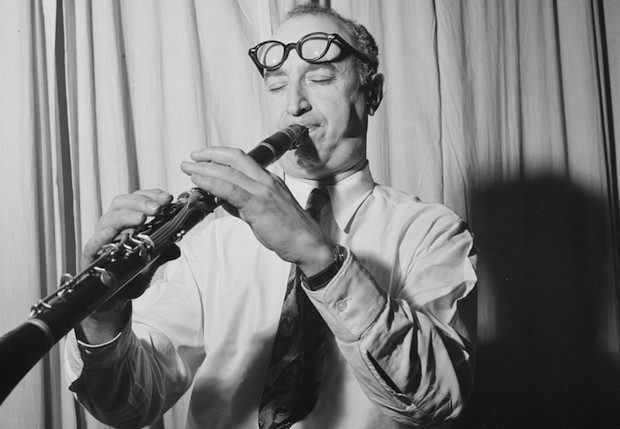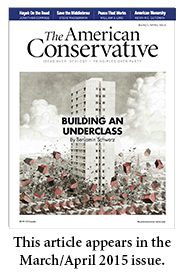Black Like Kerouac

“Never try to be something you’re not, because the audience is looking for authenticity.” So, in Adweek, says drag celebrity RuPaul, who ought to know. This pursuit of authenticity, of course, goes back a long way, to Rousseau, I understand, if not earlier. But it took on a special urgency in this country in the years following World War II when, the story goes, Republican conformity was bulldozing all the joy and spontaneity out of life.
This itch to get real has continued unabated to our own day, becoming a cliché and an obsession of the marketing business that Adweek celebrates. It will always be possible, evidently, to sell blue jeans not so much by evoking images of the people who actually wore them to work—everyone does now—but of those who tried to look like the people who wore them to work: Marlon Brando and James Dean. Or Jack Kerouac.
The desire for genuine experience was a central concern of the Beats, who came to public attention about the same time, and for many of the same reasons, as Brando and Dean and the rebellion against square society they expressed. It is the central concern of Kerouac’s On the Road which, decade after decade, casts its peculiar spell over young readers. I was one of those young readers myself once, and I re-read the novel recently to see how it held up. I can’t say I was disappointed, but my expectations were not high.
It’s hard to imagine I was ever so young as to have found this book enchanting. Kerouac’s would-be rebels strike me today as far more impressed by their own frantic grasping for genuine experience than anyone else should be. This is not news now, but they treated the women who pass in and out of their lives with about as much regard as you might expect of grown-up drunks who—as Kerouac himself did—live with and off their aging mothers. Knowing what we know today about the drug use and sexual practices of the men on whom the author based his characters, it is apparent, too, how much this fearlessly candid author in fact concealed.
I was also “tremendously amazed,” as Kerouac would probably have written, at how badly he wrote. Kerouac “writes not so much about things,” Alfred Kazin noticed, “as about the search for things to write about.” Sal Paradise and Dean Moriarty’s adventures are never as “crazy,” “fantastic,” “mad,” “wild,” or “tremendous” as Kerouac would have us believe, no matter how “crazy,” “fantastic,” “mad,” “wild,” or “tremendous” he tells us they were. Kerouac seemed to think that by the use of these adjectives he can move the reader as deeply as his narrator professes to be by, say, hanging around in a jazz club with real Negroes. He is mistaken.
I was awfully naïve once, but never so naïve as Kerouac/Paradise, who understands so little about the lives of black Americans that he wishes he “were a Negro [because] the best the white world could offer was not enough ecstasy, not enough life, joy, kicks, darkness, music, not enough night.” It is passages like that—about, for instance, the “happy, true-heart ecstatic Negroes of America”—that inspired me to pull from the shelf another book that expresses much the same desire. It did so, however, with greater honesty and courage than On the Road. It also conveys more pleasure, in large part because it makes far fewer claims for itself.
This was Really the Blues, the autobiography of an endearing oddball named Milton “Mezz” Mezzrow. Born in Chicago in 1899 to Russian Jewish parents, Mezzrow fell under the spell of Bix Beiderbecke, Sidney Bechet, and other early jazz musicians. He learned to play the clarinet, recorded with many of these better known musicians, including Louis Armstrong and Fats Waller, and—here’s where things get fun—decided he too wanted to be black. Mezzrow determined that he “was going to be a Negro musician, hipping the world about the blues the way only Negroes can.” 
Effectively renouncing his white citizenship, he married a black woman, moved to Harlem, and declared himself a “voluntary Negro.” This was years before Norman Mailer wrote his 1957 essay declaring the “white Negro” a “fact of American life.” Examples of this new species could then be seen from tour buses passing through Greenwich Village, among other places, where “the bohemian and the juvenile delinquent came face-to-face with the Negro,” developing the hip, as opposed to square, sensibility. But this hip cat Mezzrow was way ahead of all of the Norman-come-lately’s.
An only passable reed man—“Any little boy can play the clarinet of sax as good as Mezz can,” Pops Foster wrote in his autobiography, “He just stands up there and goes toot-toot-toot”—Mezzrow, like so many early jazz musicians, had a day job. He sold marijuana. In his time, his name became so closely associated with the product he sold that in certain circles he became a brand; the word “mezz” became slang for marijuana. (You can hear it referred to in the old standard “If You’s a Viper.”
In Really the Blues, Mezzrow writes with admirable honesty about his involvement with drugs, including an opium habit. It was his drug use that resulted in possibly the most memorable passage in his autobiography, and certainly the most amusing. In 1940, while trying to get into the Gay New Orleans performance space at the World’s Fair in Flushing, he was arrested carrying 60 joints. He was convicted of possession with intent to distribute and sent to Riker’s Island. There he told the guards he was black, hoping to be housed in the segregated unit.
“I’m colored, even if I don’t look it,” he said, “and I don’t think I’d get along in the white blocks.” The deputy “studied my features real hard. He seemed a little relieved when he saw my nappy head” and sent the felon off to live with his own kind, as Mezzrow defined it. When he had paid his debt to society, he moved back to Harlem and eventually to Paris, where in 1972 he died.
Really the Blues bears a significant and generally unacknowledged relationship to the Beat Generation and almost certainly to its literary experiments. There have been elaborate attempts to account for Kerouac’s “spontaneous bop prosody,” and the more elaborate they are, the drearier and more pathetic they become. The simplest explanation seems to be that Kerouac, having gorged himself on Henry Miller and Walt Whitman, attempted to mimic in prose the phrasing of jazz improvisation. That, of course, also appears to be the chief influence on Mezzrow, whose slangy hipster prose at times sounds like Kerouac’s—or vice versa. Of a parade by the prison band, for example, Mezzrow writes:
Right away the whole band stiffened up and began to sparkle, like they all got a heavy shot of thyroid extract. Travis, who was playing the lead on his horn, got carried away in the flood too and he began to swing out with a sudden husky vibrant tone, taking his breath at the natural intervals just where he felt them, and the whole band was suddenly marching and swaying to a new rhythm. And every beat Frankie pounded on his drums was in perfect time with every variation somebody picked out on my clarinet, and my clarinet and the trumpet melted together in one gigantic harmonic orgasm, and my fingers ran every whichaway, and the fellows in the Ninth Division began to grin and stomp and shout, ‘Blow it Mezz!’ they yelled, ‘Yeah I hear you!’ ‘Get away, poppa!’ ‘Put me in the alley!’
Of course, Mezzrow never wrote any of this. The author of Really the Blues was in fact a minor writer of the time named Bernard Wolfe, who ghosted Mezzrow’s story. Wolfe is an interesting case himself, having served as Leon Trotsky’s secretary when the latter was in Mexico.
As for the book’s connection to the Beats, Kerouac didn’t cop to having read it, much less been influenced by it, but Allen Ginsberg remembered it well. Ginsberg, who recalled its appearance at the Columbia University bookstore, said Really the Blues was “for me the first signal into white culture of the underground black hip culture that pre-existed before my own generation.” (Woody Allen, for what it is worth, calls Really the Blues one of the five books that had the greatest impact on his own life and work, even though he thinks the stories in it are “probably just a bunch of junk.”)
Ginsberg says it was the mid-’40s, and he is correct: Really the Blues was published in 1946. The events that form the story of On the Road took place between 1947 and 1950. On the Road was not published until 1957. All of which is to say that however authentic the Beats might have thought they were, however eager they were to drench themselves in raw experience and express it in their work, On the Road was very likely the imitation of one white guy (Kerouac) imitating another white guy (Wolfe) imitating another white guy (Mezzrow) imitating—black people. All in the name of authenticity.
Of course, authenticity is now a kind of racket in America. Alleged experts write entire books telling “business leaders” how to fake it. Kerouac, it’s my bet, could teach these imposters a few tricks they’ve never thought of, including not to acknowledge your sources when you steal from them. If Kerouac had taken better care of himself, he might be alive today, giving TED talks.
Alan Pell Crawford is the author of Twilight at Monticello: The Final Years of Thomas Jefferson.
Comments